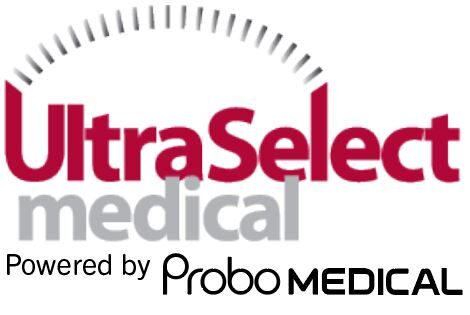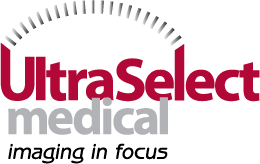Your New Ultrasound: Post Purchase Thoughts
As you read this blog many of you will think these things being discussed should be in the pre-purchase phase of the planning. However many times these issues are addressed after the machine has been purchased and may be on site. This is why we posted this in a separate blog.
Room Set Up
This section is in reference to where and what items are in the ultrasound room. Thirty plus years in the ultrasound field working with JCAHO is also the basis for the categories listed here. The first thing to consider is what hand the medical provider uses to perform the ultrasound. Since less than 5% of ultrasound providers are ambidextrous, the machine and the bed do not change position once it is decided upon the position. For right handed providers the bed is to the right of the ultrasound machine and to the left of the system for left handed providers. This makes sense right?
There must be adequate room to position the machine relative to the bed. The OEM recommendations are for the unit to be at least eighteen inches from the wall. It is best practices to have the side of the bed opposite to the provider against the wall. While side rails should be up at all times I can tell you horrendous stories of injuries that have happened with side rails up and no wall there as a deterrent. Many times these rooms are designed with the user interface of the ultrasound system and the patient’s feet toward the door.
The bed that the patients occupy bears consideration here. Depending on what types of exams are being done, the bed must be comfortable for both the patient and the provider. This means that the bed may have cut outs, must be handicapped accessible (able to raise and lower) and other helpful rails. The bed should have the ability to have the head raise and lower, have nearby space for IV poles or hangers for the IV poles above the bed. The bed should be in easy viewing position if there is a secondary monitor to see parts of the ultrasound exam. There should also be space for oxygen tanks or wall oxygen. Yes this should be considered even for outpatient clinics.
Then there are the added features of the rooms like a sink for the provider. Employees should never have to handle a door or leave the patient unattended to wash their hands. Some clinics have a private bathroom in the immediate vicinity of the ultrasound room and yet have an additional sink for the employees. This is the best scenario. These sinks and bathrooms should also have the necessary equipment to accommodate handicapped patients.
Other space issues to be considered are storage for probe cleaning equipment, like Trophons, Cidex trays and Gas Particle Sterilizers. Some can be quite large so counter or cart space needs to be addressed. The sharps containers also require space and close proximity to the treatment area. Ultrasound supplies are also in this category. The cloths used to clean the probes, machine and bed need to be stored. Towels, sheets, pillow cases and blankets need to be in the room with the technologist to be ready to use at a second’s notice. Lastly there are probe covers, needles, paper towels, gauze, alcohol pads and other clinical items that need to be kept in the room. Disposal receptacles also take up space. Again this should be planned because the provider should never have to leave the patient to dispose of anything. Space is a primary concern.

Ambiance
In the past, it was thought that these exam rooms should be sterile and stark white. Well things have changed. Today with special paints and finishes that are easier to clean and have low VOC the choices are endless. This is more of the touchy-feely section. How do the patients and family feel when they come into the room? Temperature with ultrasound is very important. Again the recommendations are to have a thermostat in each scanning room to be completely adjustable. The same is true for light control. It must be dark enough for proper ultrasound settings to be used. Full light may be needed for any treatments to be completed. It should not be so dark that will affect the eyesight of the provider either.
HVAC is another issue that ties into temperature. The best thing is to have a dedicated system for each room. However in large departments this is not possible and dedicated systems can be pricey. There are things that you can do that contribute to better health. Try to position the machine and bed so that they are not directly under the input. Also there must be an adequate return for the HVAC to work well.
Noise is another consideration. Any objects in the room the emit EMI may affect the image quality. You do not want walls so thin that you can hear what is going on in another exam room and vice versa. Confidentiality would be at risk in this situation. There are any number of insulation solutions you have.
Interior decoration should be something to think about. There have been numerous studies about wall colors, styles and decorations. The best choice is to decorate much like a home. Surfaces that are easy to clean are best. Work stations out of view of the patient for confidentiality reasons. Walls should have some meaningful pictures on the walls. Things that are evocative of comfort and peace are appreciated. A well appointed, spacious room will contribute to patient’s desire to come back time and again.

Quality Measures
Quality assurance affects the longevity of the equipment and the staff. It is best to have one designated person to do daily visual inspections of the cords, units and probes and log it. If your machine has filters, the provider who runs that machine is responsible to cleaning them regularly. Keep the machines and probes very clean. Also a system back up is required of all machines periodically. This prevents the machines from slowing down or malfunctioning. Proper training on your system from a qualified applications specialist is a must to get the most out of your machine. Plus most applications specialists are well trained in ergonomics to advise the staff on the best chairs, accessories and practices to keep them healthy. You spend a great deal of money on the ultrasound systems so why not use it to the best advantage.
There is much to consider when adding a new ultrasound machine or even adding it as a new modality. The planning is the key. We hope that this blog has helped you in your goals.
PLEASE CALL US AT 843-566-1020 FOR ANY QUESTIONS.


